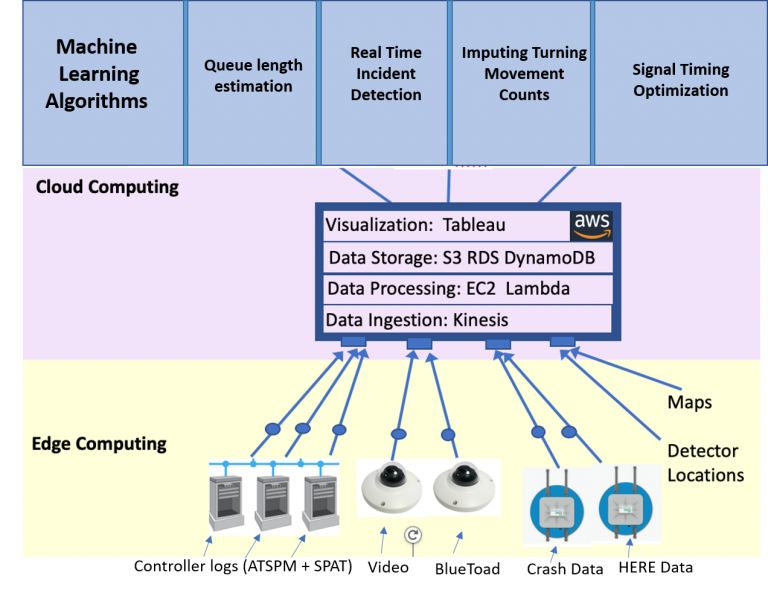
Urban traffic control is one of the most important and challenging issues facing cities. Increases in the volume of traffic have significant impacts on congestion and consequently on the amount of time that travelers spend on the road.
Furthermore, traffic signal control timing does not change in real-time based on changes in traffic patterns or crashes and incidents. Therefore, addressing these challenges requires a thorough data-driven modeling of traffic patterns not only at intersections but on streets and in the overall network.
Recent advances in Intelligent Transportation Systems (ITS) have led to the widespread deployment of various real-time sensing and data collection systems such as high-resolution loop detectors, video cameras, GPS devices, and more. The availability of this type of information, along with the availability of cheap GPU-based computing and deep neural network algorithms, has opened up the possibility of developing data-driven computational methods for signal timing optimization.
Yashaswi (Yash) Karnati, a Ph.D. student in the UF Department of Computer & Information Science & Engineering (CISE), is working with transportation engineers at the University of Florida Transportation Institute (UFTI) to develop a machine-learning-based system that uses sensing data. The data is fused to develop real-time algorithms for signal retiming for intersections and corridors to reflect changes in demand patterns and incident detection for alleviating traffic backups and secondary crashes.
The work is funded by the National Science Foundation and the Florida Department of Transportation under the title of “Machine Learning Algorithms for Improved Network Traffic Signal Policy Optimization.”
“We are developing algorithms, software, and systems that leverage multimodal data for real-time incident detection, queue length estimation, imputing turning movement counts, signal timing optimization, and more,” Karnati said.

However, one of the key challenges is that algorithms developed on simulators fail to generalize in real-world scenarios, and even the best available simulators do not perfectly capture reality. Karnati, who is advised by Sanjay Ranka, Ph.D., a professor, is working to ensure reality is effectively captured.
“My research also focuses on improving the fidelity of simulations by using real-world data to fine-tune the parameters of the simulation,” he said. “By incorporating different techniques from domain adaptation and system identification, I’m focusing on closing the simulation to reality gap so that these algorithms can be used in practice.”
So far, the project has yielded software that supports real-time detection of incidents, imputing turning movement counts, queue length estimation, and historical data analysis, which identify potential problems in existing signal timing policies. The team is currently working on developing reinforcement learning and game-theory-based techniques for real-time signal timing optimization to automatically derive near-optimal signal timing plans for each network.
The software developed by the collaborative effort between UFTI and CISE will be useful to traffic engineers and practitioners. It will not only make data-driven operational decisions to help reduce congestion and ensure safety, but it will also improve travel time across the traffic network.
This story was originally published on the UFTI website.
